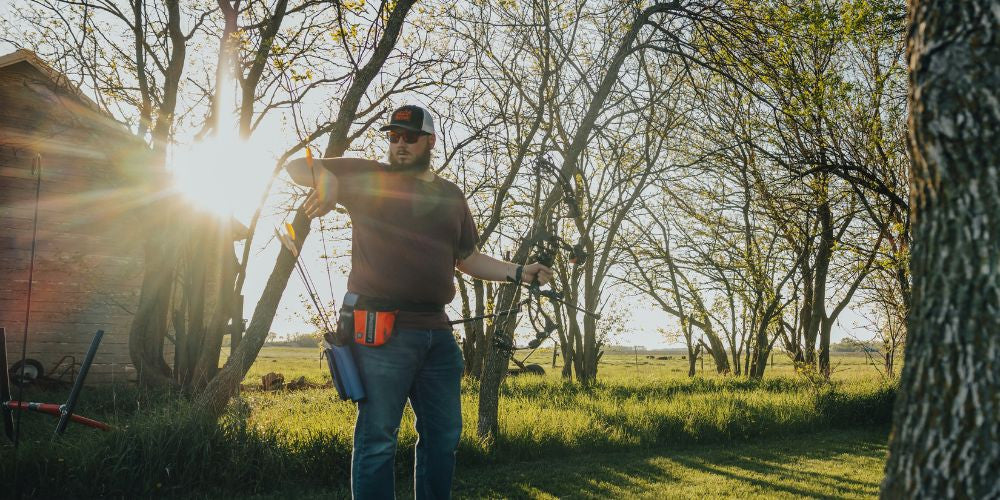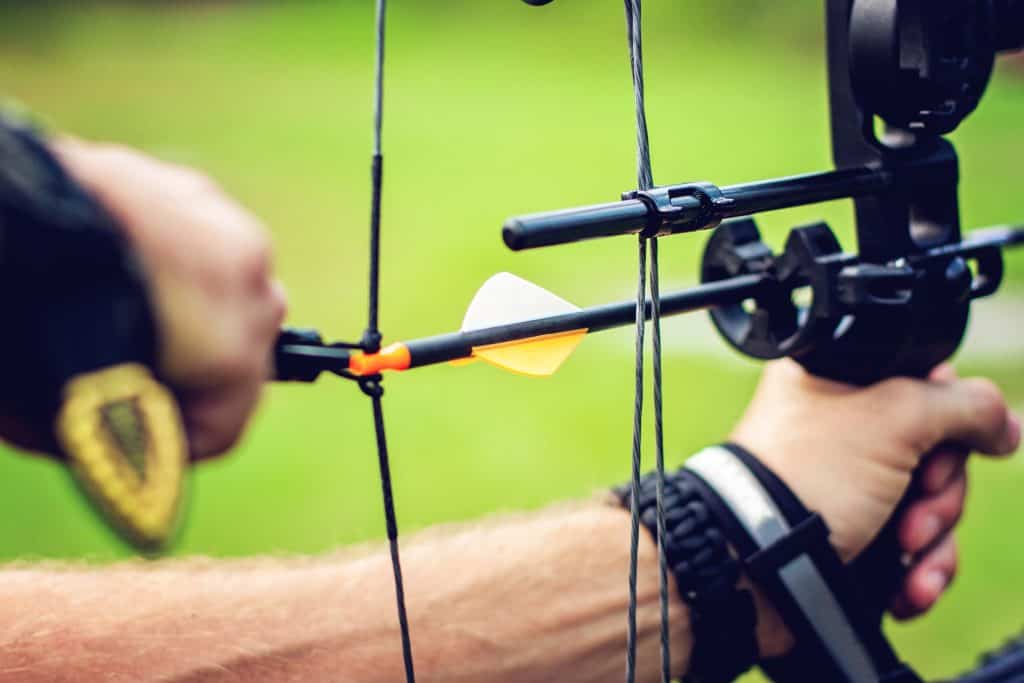The bowstring is one of the most essential parts of your entire archery set. However, most of us tend to put the bowstring on the back burner when considering everything else about the bow and arrow. Considering how important it is to the success of your archery, it shouldn't be. Like everything else concerning your archery set, finding the best string is very important. And, as you would expect, several pointers can help you out.
A Quick Introduction To The Bowstring
The name pretty much says it all - your bowstring is that part of the bow that houses the arrow and helps you fire. Essentially, if your entire bow were a car, the string would be the tires.
The best bow string will help you easily transfer energy from your arm to the bow, thus providing a good platform for the arrow's release. So, it's pretty apparent that the bow string is a very critical tool.
Historically, bowstrings were made of materials like plant fibers, sinew, and animal hides. However, times have changed, and we now see bow strings being made of more advanced fibers and synthetic materials.
Generally, a bowstring can come in different forms. But the most popular include:
-
Flemish twist strings
-
Endless loop strings
-
Compound bow string
Categories of Bowstrings
Archery bow strings usually come in two major categories, depending on the types of bows that we have. These are:
Compound Bowstrings

Compound bows are among the most popular in the market, and they have bowstrings that work specifically for them.
Given the complexity of compound bows, it is crucial to get strings made of high-quality materials for them. Also, you want to carefully identify the bowstring and cable length when shopping for a compound bowstring. Most compound bows come with these specifications written down, or you should be able to find them in the owner's manual.
Recurve Bowstrings

Recurve bows and compound bows are different on several fronts. So, it should be no surprise that recurve bowstrings would differ from compound bowstrings.
For most recurve bows, you can find two types of strings - the Flemish twist and the endless loop strings. A Flemish twist has braided loops on each end, giving it an alluring and simple look. On the other hand, the endless loop bowstring has loops formed by wrapping a serving material around the bow string. They are constructed to be more precise than Flemish twist bowstrings, and most professional archers prefer them.
In terms of materials, recurve bowstrings are usually made of one or more of the following options:
-
Dacron: Dacron is a polyester material known for its strength, high stretch, and longevity. It is especially great for wooden bows and recurve bows.
-
Kevlar and Vectran: These materials are also polymers. They come with limited stretch, so they tend to be much faster than Dacron strings. The only problem is that they tend to last only a short time.
-
High-Modulus Polyethylene (HMPE): HMPE comes as a blend of Dyneema and Spectra. It is the premium option for most archers, combining speed and a lightweight build with optimal strength. If you want a high-quality recurve bow string, HMPE is an excellent material.
How To Use Recurve Bowstrings
To string a recurve bow, all you have to do is follow these steps:
-
Purchase the best recurve bowstring you can find.
-
Place the string over the bow tips.
-
Fit the stringer pocket over the lower limb tip.
-
Place the small pocket on the upper limb.
-
Hold the bow in a horizontal fashion.
-
Step on the bow stringer and draw the bow up.
-
Slide the large loop on the notch and secure the fitting.
-
Lower the bow slowly and remove the bow stringer.
-
Adjust the bow and brace height.
-
You are good to go.
What To Look Out For In A Bowstring
Primarily, you need to consider the following when selecting your bowstring:
-
Weight: The best bowstrings are very light so that you can conserve energy
-
Strength: You want a bowstring that can hold your weight and quickly transfer energy
-
Abrasion resistance: For long-lasting use, abrasion resistance is also vital. This is one area where our recurve bowstring has an advantage.
-
Moisture resistance: This way, you know the bowstring will also work in wet conditions.
Bowstring Wax - Another Critical Factor
Not many archers get so involved in the details, but one thing you should always consider is the bowstring wax.
Over time, your bowstring will start to fray due to extended use. The bowstring wax is a simple material that helps delay the fraying process, thus extending the string's lifespan. Using bowstring wax on your strings is very important, and there are different wax options for you:
-
Beeswax: This wax option is best for traditional bow strings made from animal and plant materials.
-
Silicone wax: Silicone wax works more for modern bow strings. Some of the best bowstrings already come pre-waxed. But, this factory-made waxing eventually wears off. You can easily lubricate your modern bow string with silicone wax and extend its lifespan.
Maintaining Your Bow String
Given the importance of your bowstring, it is essential to know how to maintain it. With that in mind, here are a few things you want to do to ensure that your bowstring remains in top condition:
-
Routine waxing is incredibly important if you hope to maintain your bowstring.
-
Remember not to over-wax the bowstring. Just put enough wax to lubricate the material.
Waxing is relatively easy. All you have to do is rub some bowstring wax back and forth on the string using your fingers until the string is soaked. This allows the wax to penetrate the material and permeate all of its strands.
Whatever design you choose, remember to take care of your bowstring properly. You're only as good an archer as the archery materials you have, and the bowstring is undoubtedly one of the most important, regardless of the price.
Best Bow Strings
This is why it is essential to strive for the best bow string available as an archer. Fortunately, at Legend Archery it is our commitment to help you with all of your archery needs. Check out our Propel ™ B-55 bow string, trusted by professionals, athletes, and hunters to deliver a great shot every time. You'll find everything else you may need in the navigation menu.
 cust@legendarchery.com
cust@legendarchery.com 302 503 5767
302 503 5767 Whitestown, In 47075
Whitestown, In 47075




